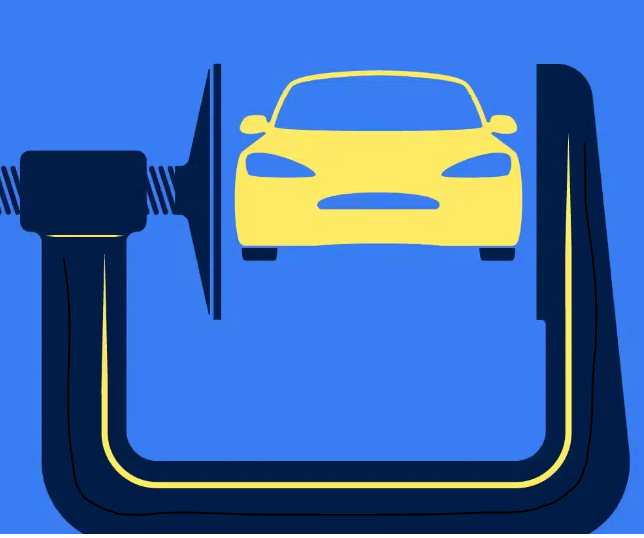If you’re feeling the weight of high monthly payments on your car loan, you may be wondering if there’s a way to reduce your financial burden. Car loan refinancing can be an excellent solution, helping you lower your interest rate, reduce monthly payments, and potentially save thousands over the life of the loan. But how exactly does car loan refinancing work, and is it the right option for you?
What is Car Loan Refinancing?
Car loan refinancing involves replacing your existing car loan with a new one that has different terms, typically offered by a different lender. The new loan might have a lower interest rate, a longer repayment period, or other more favorable terms that reduce your financial burden. By refinancing, you’re essentially taking out a new loan to pay off your existing car loan, which can help you save money in the long term.
Step 1: Evaluate Your Current Loan
Before you decide to refinance, it’s crucial to assess your current loan situation. Take a look at the interest rate, monthly payment, remaining balance, and loan term. Compare these with current car loan rates available in the market. If your current loan has a high interest rate or if your financial situation has improved (e.g., you’ve raised your credit score), refinancing might be a good option. Also, consider whether your car’s value supports the refinancing process, as some lenders may not refinance loans on older cars or vehicles that have depreciated significantly in value.
Step 2: Check Your Credit Score
Your credit score plays a significant role in determining the terms you can receive when refinancing. The higher your credit score, the better the interest rates you’ll likely be offered. If your credit score has improved since you took out your original loan, refinancing could allow you to secure a lower interest rate, which can save you money on interest payments over time.
If your credit score is low, refinancing may not be the best option at the moment, as you might not qualify for better terms. In this case, it might be worth working on improving your credit score before considering refinancing.
Step 3: Shop Around for the Best Rates
Not all lenders offer the same refinancing terms, so it’s important to shop around for the best car loan refinancing options. Compare interest rates, loan terms, and fees from different financial institutions, including banks, credit unions, and online lenders. Many lenders offer tools that allow you to estimate your monthly payment based on different loan terms and rates. This can help you choose the option that best fits your budget and financial goals.
When shopping for refinance car loans, remember that a lower interest rate will save you money over time, but make sure to also consider the length of the loan and any associated fees. Sometimes, refinancing to a loan with a longer term can lower your monthly payment but may end up costing you more in interest over the life of the loan. It’s essential to balance monthly payments with the total cost of the loan.
Step 4: Gather Your Documents
Once you’ve found the best refinancing offer, you’ll need to submit an application with the lender. Be prepared to provide the following documents:
- Proof of income: Recent pay stubs or tax returns to verify your income.
- Vehicle information: Details about your car, including the make, model, year, and VIN (Vehicle Identification Number).
- Current loan details: Your current loan balance, lender information, and account number.
- Proof of insurance: Lenders often require proof that the car is adequately insured.
Having these documents ready will streamline the refinancing process and ensure that you can secure the best terms available.
Step 5: Complete the Refinancing Process
Once your application is submitted, the lender will review your information and may offer you a new loan. If you accept the offer, the lender will pay off your existing loan, and you’ll begin making payments on the new loan according to the agreed-upon terms. This may involve signing a new contract, and the lender may require you to register the new loan with the appropriate authorities.
If the refinancing process involves a car title loan, ensure that the title of your vehicle is updated to reflect the new lender’s information. In some cases, you may be required to provide a new title to the car to complete the refinancing process.
Step 6: Enjoy Your Savings
After refinancing, you should begin seeing the benefits almost immediately. With a lower interest rate, you may notice a reduction in your monthly payments, or you may choose to pay off the loan faster, saving on interest in the long term. Over the life of the loan, refinancing can potentially save you hundreds or even thousands of dollars, depending on the terms and the amount of interest reduced.
Keep in mind that refinancing doesn’t eliminate your debt—it simply changes the terms of your loan to make it more manageable. Ensure that you make your payments on time and continue to track your loan balance to avoid any unexpected financial strain.
When Should You Refinance Your Car Loan?
Refinancing isn’t always the right move for everyone. Here are some scenarios where refinancing might make sense:
- Lower interest rates: If market rates have dropped since you took out your original loan, or if your credit score has improved, refinancing could lead to a lower interest rate.
- Better monthly payments: If you’re struggling to meet your current monthly payments, refinancing could help by extending the term of the loan or lowering the interest rate, reducing the amount you owe each month.
- Shorter loan term: If you want to pay off your car loan faster and save on interest, refinancing to a shorter loan term can be a good option.
However, if your car is nearing the end of its useful life or if you owe more than the car is worth (i.e., you’re upside down on your loan), refinancing may not be the best option.
Conclusion
Refinancing your car loan can be a smart financial decision if done correctly. By reducing your interest rate, lowering monthly payments, or adjusting the loan term, you can save money in the long run. However, it’s important to carefully consider your current financial situation, credit score, and loan options before making the decision to refinance. By following the steps outlined in this guide, you can make an informed choice and potentially save money on your car loan.


